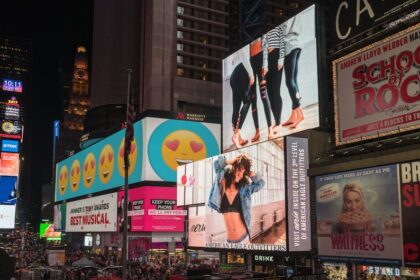Unlocking Hidden Audiences with LinkedIn Ads
The power of LinkedIn Ads extends far beyond conventional demographic targeting, offering sophisticated tools to unearth and engage highly niche, often overlooked professional segments. These “hidden audiences” represent untapped potential for businesses seeking to drive specialized leads, build brand authority within specific professional communities, and nurture relationships with decision-makers who might not be immediately visible through broader marketing efforts. Identifying and effectively engaging these audiences requires a deep understanding of LinkedIn’s targeting capabilities, a strategic approach to data leverage, and a commitment to continuous optimization.
I. Defining and Identifying Hidden Audiences on LinkedIn
Hidden audiences are not necessarily small in number, but rather elusive to conventional broad-stroke targeting. They are groups characterized by specific professional attributes, behaviors, or affiliations that require granular, multi-layered targeting to pinpoint.
- Niche Professional Segments: These include individuals in highly specialized roles (e.g., Quantum Computing Engineers, Sustainable Supply Chain Consultants, AI Ethics Researchers), or those within emerging industries not yet categorized by standard industry codes. Their unique skill sets, certifications, or group memberships are key identifiers.
- Influence Networks: Beyond job titles, hidden audiences can be individuals who exert significant influence within a particular professional sphere, irrespective of their official designation. They might be group administrators, frequent content contributors, or highly connected individuals within specific LinkedIn Groups relevant to your offering.
- Early Adopters & Innovators: These professionals are often researching cutting-edge technologies or methodologies before they become mainstream. Identifying them involves targeting interests in emerging trends, specific publications, or memberships in forward-thinking professional associations.
- Decision-Makers in Unconventional Roles: The traditional C-suite is visible, but key decision-makers often reside in roles like Head of Digital Transformation, Director of Sustainability, or Chief Data Officer – titles that might be missed in broader “senior leadership” sweeps, especially within smaller or agile organizations.
- Competitive Landscape Audiences: Individuals working for competitors, or those who have recently viewed competitor profiles, visited their websites, or engaged with their content. While direct targeting of competitors’ employees is generally unethical, understanding the broader landscape and the types of individuals drawn to similar solutions can inform your strategy.
- Alumni Networks and Educational Backgrounds: Targeting individuals based on specific university alumni networks, specialized degree programs, or even certifications (e.g., PMP, CFA, specific coding bootcamps) can uncover highly qualified, often overlooked talent pools or B2B prospects.
- Event Attendees and Enthusiasts: Professionals who have attended specific industry conferences, webinars, or have expressed interest in particular events. LinkedIn’s Event Ads and retargeting capabilities based on engagement with event pages are crucial here.
II. Advanced LinkedIn Targeting Mechanisms for Uncovering Niche Segments
Unlocking hidden audiences hinges on mastering LinkedIn’s layered targeting options, moving beyond simple job titles to intricate combinations of attributes.
-
A. Demographic & Firmographic Targeting Reimagined:
- Job Title (Precise & Historical): Instead of just current titles, consider past titles that indicate career progression or specialized experience. For hidden roles, research common synonyms or variations. Example: Targeting “Growth Hacker” or “Revenue Operations Specialist” rather than just “Marketing Manager.”
- Seniority Level & Job Function Combinations: Combine a specific job function (e.g., “Engineering”) with a mid-level seniority (e.g., “Senior”) and a particular industry (e.g., “Biotechnology”) to find lead engineers in a cutting-edge sector.
- Industry (Hyper-Niche): Don’t just select “Software.” Look for “Biotechnology Research,” “Renewable Energy Semiconductor Manufacturing,” or “Space Exploration” if applicable. LinkedIn’s industry list is quite granular.
- Company Size (Strategic Scaling): Hidden audiences might be more prevalent in smaller, agile startups (where decision-makers wear many hats) or in specific departments of very large enterprises.
- Company Name (Exclusion & Inclusion): Exclude existing customers or undesirable prospects. Include a list of target accounts (Account-Based Marketing for hidden segments) or known innovators in a space.
- Company Followers (Competitor & Partner Insight): Target followers of competitor pages or pages of companies providing complementary services. These individuals have already shown an affinity for a related ecosystem.
-
B. Skill-Based Targeting for Expertise Identification:
- Skills are often more indicative of specific expertise than job titles. Target highly specialized skills (e.g., “TensorFlow,” “GDPR Compliance,” “Change Management Consulting,” “FinTech Regulation”).
- Combining Skills: Layer multiple skills to narrow down to very specific profiles. Example: “Cybersecurity” + “Cloud Computing” + “Incident Response” for highly specialized security architects.
- Endorsed Skills: LinkedIn prioritizes skills that have been endorsed, suggesting a higher level of proficiency.
-
C. Group-Based Targeting for Community Identification:
- LinkedIn Groups represent powerful communities of professionals sharing common interests, challenges, and expertise.
- Identifying Relevant Groups: Search LinkedIn for niche groups related to your product/service, specific technologies, industry challenges, or even professional certifications.
- Targeting Group Members: This is an incredibly effective way to reach highly engaged, self-identified interest groups. Example: Targeting members of “AI in Healthcare” or “Sustainable Supply Chain Professionals” groups.
- Engagement Levels: While you can’t filter by activity within groups, the mere membership indicates a professional interest. Ad copy tailored to group discussions can resonate deeply.
-
D. Interest-Based Targeting for Behavioral Insights:
- LinkedIn’s “Member Interests” leverage implicit signals from content consumption and interaction.
- Granular Interests: Look beyond broad interests like “Marketing.” Seek out specific interests like “Predictive Analytics,” “Blockchain Technology,” “Carbon Capture,” or “Digital Ethics.”
- Layering Interests: Combine multiple precise interests to create highly targeted segments (e.g., “Renewable Energy” + “Project Finance” + “ESG Investing”).
- Content Alignment: Ensure your ad creative and copy directly speak to these specific interests to maximize relevance.
-
E. Education and Degree Targeting for Specialized Knowledge:
- Specific Degrees/Majors: Target individuals with niche academic backgrounds (e.g., Masters in Data Science, PhD in Neuroscience, certifications in specific industry standards).
- Universities/Alumni Networks: Target alumni of specific prestigious universities known for certain programs, or networks where your ideal prospects are likely to have studied. This is particularly useful for recruitment or high-end B2B services.
III. Leveraging First-Party Data for Hyper-Targeted Audiences
Your existing data is a goldmine for unlocking hidden audiences, especially when combined with LinkedIn’s platform capabilities.
-
A. Matched Audiences: The Core of Data-Driven Targeting:
- Contact Lists (CRM Uploads): Upload customer lists, sales qualified leads, or even event attendees. LinkedIn matches these against user profiles. This is crucial for nurturing existing relationships or excluding current clients from prospecting campaigns.
- Account Lists (Account-Based Marketing – ABM): Upload target company lists. LinkedIn matches employees of these companies. This is foundational for ABM strategies aiming to penetrate specific organizations, especially those where hidden decision-makers reside.
- Website Retargeting (LinkedIn Insight Tag):
- Specific Page Visitors: Don’t just retarget all website visitors. Create segments based on visits to specific product pages, pricing pages, career pages, or blog posts about niche topics.
- Time-Based Segmentation: Target visitors who were on your site for a specific duration (e.g., engaged visitors vs. quick bounces).
- Sequential Retargeting: Build funnels where visitors who saw one piece of content are then shown another, leading them through a journey.
- Exclusion Lists: Exclude existing customers, applicants, or irrelevant traffic.
-
B. Offline Conversion Uploads:
- For leads generated offline (e.g., trade shows, phone calls), upload conversion data back into LinkedIn Campaign Manager. This helps LinkedIn’s algorithm learn what types of users convert, informing future ad delivery and allowing for more accurate lookalike generation.
-
C. Video View Retargeting:
- If you’ve run video ads on LinkedIn, create audiences based on video view percentages (25%, 50%, 75%, 100%). Those who watch a higher percentage demonstrate greater interest in your content, indicating a higher likelihood of being a hidden prospect. Tailor subsequent ads to these engaged viewers.
-
D. Lead Gen Form Submission Audiences:
- Retarget individuals who opened but did not submit a Lead Gen Form. This is a highly engaged, “bottom of the funnel” hidden audience ready for a gentle nudge.
-
E. Event Engagement Audiences:
- Target users who clicked on, viewed details for, or expressed interest in your LinkedIn Events. This audience has self-identified their interest in a specific topic or type of content, making them ripe for further engagement.
IV. Unveiling New Prospects with Lookalike Audiences
Once you’ve identified and leveraged your initial hidden audiences through matched audiences, the next step is to find more like them using Lookalike Audiences.
-
A. Source Audience Selection:
- High-Value Customer Lists: Create lookalikes based on your most profitable or loyal customers. This is perhaps the most powerful use case.
- Website Visitors (Specific Pages): Generate lookalikes from visitors to your most high-intent website pages (e.g., demo requests, pricing, specific solution pages).
- Engaged Video Viewers: Lookalikes from 75% or 100% video viewers.
- Lead Gen Form Submissions: Lookalikes from actual lead submissions.
- LinkedIn Page Followers: Lookalikes from your most engaged followers, or followers of specific posts.
- Offline Conversion Data: Lookalikes from users who completed an offline conversion.
- Event Attendees: Lookalikes from individuals who attended your LinkedIn events.
- CRM Stages: Create lookalikes from customers who have reached specific stages in your sales pipeline (e.g., “Opportunity Created,” “Deal Won”). This allows for greater precision than just “customer list.”
-
B. Lookalike Size and Granularity:
- LinkedIn allows for different lookalike sizes (Small, Medium, Large). While larger audiences offer greater reach, smaller, more precise lookalikes derived from highly segmented source audiences often yield better results for hidden segments.
- Experiment with different source audiences and lookalike sizes to find the sweet spot that balances reach and relevance for your specific hidden audience.
-
C. Combining Lookalikes with Other Targeting:
- Don’t just run lookalikes standalone. Layer them with other relevant targeting criteria to further refine the audience.
- Example: A lookalike audience based on your top customers, further filtered by specific job functions or seniority levels that define your hidden prospect. This adds a critical layer of validation.
- Exclusion: Always exclude the original source audience from your lookalike campaigns to avoid overlap and wasted ad spend.
V. Crafting Compelling Ad Creative and Copy for Niche Audiences
Generic ads will fail to resonate with hidden audiences. Your messaging must speak directly to their unique pain points, aspirations, and professional language.
-
A. Hyper-Personalization and Specificity:
- Language of the Niche: Use industry-specific jargon, acronyms, and terminology that resonates with the hidden audience. For a “Quantum Computing Engineer,” use terms like “qubits,” “superposition,” and “entanglement.”
- Direct Addressing: Start headlines or ad copy by directly addressing their role or challenge (e.g., “Are you a FinTech Compliance Officer struggling with X?”).
- Benefit-Oriented: Focus on the specific benefits and solutions your product/service offers to their unique professional challenges. How does it make their job easier, more efficient, or more impactful?
-
B. Ad Formats for Impact:
- Single Image Ads: Versatile and effective. Use strong, relevant visuals that speak to the niche. Avoid stock photos if possible; use real-world applications or technical diagrams.
- Video Ads: Highly engaging. Use short, crisp videos that explain complex solutions simply or showcase testimonials from peers in their niche. Demo videos are particularly effective for technical hidden audiences.
- Carousel Ads: Tell a sequential story or highlight different facets of a complex solution relevant to different aspects of the hidden audience’s role.
- Document Ads: Share in-depth white papers, case studies, or research reports directly within the LinkedIn feed. This is excellent for highly technical or research-oriented hidden audiences who appreciate deep dives.
- Lead Gen Forms: Integrate seamlessly for quick lead capture. Customize the form fields to gather specific information relevant to qualifying these niche leads. Offer valuable gated content (webinars, exclusive reports) in exchange for information.
- Event Ads: Promote webinars, online workshops, or industry events tailored to the specific interests of your hidden audience.
- Thought Leader Ads (Boosted Posts): Amplify organic content from internal subject matter experts that addresses the niche’s challenges. Authenticity resonates deeply.
-
C. Call to Action (CTA) Optimization:
- Clear and Specific CTAs: “Download the [Niche] White Paper,” “Register for the Advanced AI Webinar,” “Request a Demo for [Specific Solution],” “Join the [Industry] Community.” Avoid generic “Learn More.”
- Low-Commitment CTAs for Top of Funnel: For truly hidden audiences, initial CTAs should be low-commitment (e.g., “Read the Blog Post,” “Watch the Explainer Video”).
- High-Commitment CTAs for Bottom of Funnel: For retargeting high-intent hidden audiences, move towards “Get a Free Consultation,” “Request a Quote,” or “Start Your Free Trial.”
VI. Structuring Campaigns for Hidden Audience Discovery and Nurturing
A well-structured campaign framework is essential for systematic discovery, engagement, and conversion of hidden audiences.
-
A. Phased Campaign Strategy:
- Phase 1: Discovery & Awareness (Top of Funnel):
- Objective: Introduce your brand/solution to potential hidden audiences.
- Targeting: Broad but refined targeting using combinations of skills, groups, interests, and precise firmographics. Initial lookalikes.
- Content: Educational content (blog posts, articles, short videos, infographics) that addresses common pain points or introduces new concepts relevant to the niche.
- CTAs: “Learn More,” “Read Article,” “Watch Video.”
- Metrics: Impressions, reach, video views, content engagement.
- Phase 2: Engagement & Consideration (Middle of Funnel):
- Objective: Nurture interest and provide more in-depth information.
- Targeting: Retargeting audiences from Phase 1 (website visitors, video viewers, content engagers). More refined lookalikes based on deeper engagement.
- Content: Webinars, white papers, case studies, long-form articles, specific product feature demos.
- CTAs: “Download White Paper,” “Register for Webinar,” “View Case Study.”
- Metrics: Clicks, landing page views, lead magnet downloads, sign-ups.
- Phase 3: Conversion & Decision (Bottom of Funnel):
- Objective: Drive direct conversions.
- Targeting: Retargeting high-intent audiences (e.g., pricing page visitors, demo form visitors, specific account lists). CRM-matched audiences (e.g., SQLs, MQLs).
- Content: Product demos, free trials, consultation offers, pricing information, customer testimonials.
- CTAs: “Request Demo,” “Get Quote,” “Start Free Trial,” “Contact Sales.”
- Metrics: Lead conversions, MQLs, SQLs, pipeline generated, ROI.
- Phase 1: Discovery & Awareness (Top of Funnel):
-
B. Budget Allocation & Bidding Strategies:
- Target Cost Bidding: For specific conversion goals with a defined CPA.
- Manual Bidding: For granular control, especially when testing new hidden audiences or when audience size is very small.
- Automated Bidding (Max Delivery/Maximise Conversions): Can be effective once LinkedIn’s algorithm has enough data from your campaign to understand your conversion goals. Use with caution for very small or niche audiences where data might be sparse.
- Budgeting for Testing: Allocate specific budget for A/B testing different audience segments, ad creatives, and offers. Hidden audiences often require more upfront testing to discover what resonates.
-
C. A/B Testing for Refinement:
- Audience Segments: Test slightly different combinations of targeting criteria to see which hidden audience segments perform best.
- Ad Creative Variations: Test different headlines, ad copy, images, and video styles.
- Call to Actions: Experiment with different CTAs.
- Landing Pages: Ensure landing page content is highly relevant to the ad and the specific hidden audience.
- Offer Types: Test different lead magnets or offers.
- Isolate Variables: Only change one variable at a time to accurately assess impact.
VII. Measurement, Analytics, and Optimization for Hidden Audiences
Tracking the right metrics and continuously optimizing are paramount for turning hidden audiences into tangible business results.
-
A. Key Performance Indicators (KPIs) Beyond Clicks:
- Reach & Frequency: Ensure your ads are reaching enough unique hidden audience members without over-saturating them.
- Engagement Rate: Likes, comments, shares, and clicks indicate how well your content resonates with the niche.
- Video Completion Rate: For video ads, this shows how engaged your audience is with your message.
- Lead Quality (Post-Conversion): Work closely with sales or your CRM to track the quality of leads generated from hidden audience campaigns. Are they converting into opportunities or customers? This is the ultimate measure of success.
- Cost Per Qualified Lead (CPQL): More important than CPA for niche audiences. A higher CPA might be acceptable if the lead quality is significantly higher.
- Pipeline & Revenue Generated: Ultimately, tie ad spend back to business outcomes.
-
B. LinkedIn Campaign Manager Insights:
- Demographics Report: Dive deep into the professional attributes of the individuals who are engaging with your ads or converting. This can reveal unexpected hidden segments or validate your initial assumptions. Look at job seniority, industry, job function, company size, and even location.
- Performance Chart: Track trends in key metrics over time.
- A/B Test Results: Analyze the performance of your split tests to inform future optimizations.
-
C. Attribution Models:
- Consider Multi-Touch Attribution: Hidden audiences often require multiple touchpoints before conversion. Relying solely on last-click attribution can undervalue LinkedIn’s contribution, especially in the awareness and consideration phases.
- LinkedIn’s Conversion Tracking: Utilize the Insight Tag for robust conversion tracking within LinkedIn.
-
D. Iterative Optimization Cycle:
- Analyze Data: Regularly review campaign performance data (daily, weekly, monthly).
- Identify Underperforming/Outperforming Elements: Which audiences are most responsive? Which ad creatives resonate best?
- Adjust Targeting: Refine audience segments based on performance data. Pause underperforming segments, expand on successful ones.
- Optimize Budget Allocation: Shift budget to high-performing campaigns or ad sets.
- Refresh Creative: Ad fatigue is real, especially with niche audiences. Continuously test and refresh ad creatives and copy.
- Landing Page Optimization: Ensure the landing page experience is seamless and relevant to the ad.
- Feedback Loop with Sales: Crucially, integrate feedback from your sales team regarding the quality of leads generated. This direct feedback is invaluable for refining your hidden audience targeting and messaging.
VIII. Challenges and Solutions in Targeting Hidden Audiences
While powerful, unlocking hidden audiences comes with its unique set of challenges.
-
A. Challenge: Small Audience Size:
- Solution:
- Expand Criteria (Carefully): Broaden one or two targeting parameters slightly, or add lookalikes from highly specific sources.
- Combine Similar Niches: Group together closely related hidden audiences if they share common pain points and solutions.
- Focus on Depth over Breadth: Accept that reach will be limited, and focus on maximizing engagement and conversion rates within that smaller pool.
- Consider Thought Leader Ads: Leverage the organic reach of employee profiles within the niche, then boost those posts.
- Solution:
-
B. Challenge: High Cost Per Click (CPC) / Cost Per Lead (CPL):
- Solution:
- Optimize Ad Relevance: Ensure ad copy, creative, and landing page are perfectly aligned with the niche’s interests. High relevance improves Quality Score, which can lower CPC.
- Improve Conversion Rates: A higher conversion rate means a lower CPL even if CPC is high. Focus on compelling offers and optimized landing pages.
- Bid Strategy Adjustment: Experiment with different bidding strategies (e.g., Target Cost vs. Max Delivery).
- Focus on LTV: If the Lifetime Value (LTV) of a customer from a hidden audience is very high, a higher acquisition cost might be acceptable.
- Solution:
-
C. Challenge: Ad Fatigue in Niche Audiences:
- Solution:
- Frequent Creative Refresh: Rotate ad creatives (images, videos, copy) more often than you would for broader audiences.
- Diverse Ad Formats: Use a mix of single image, video, carousel, and document ads to keep content fresh.
- Vary Messaging: Don’t just repeat the same value proposition. Address different pain points, offer different types of content, or showcase different aspects of your solution.
- Retargeting Exclusion: Ensure you’re not constantly showing the same ad to the same people if they’ve already completed a desired action.
- Solution:
-
D. Challenge: Difficulty in Identifying the “Hidden” Aspects:
- Solution:
- Qualitative Research: Conduct interviews with existing customers who fit the hidden audience profile. What groups are they in? What content do they consume? What skills do they list?
- Sales Team Insights: Leverage your sales team’s direct interactions for insights into the language, concerns, and behaviors of your target prospects.
- Competitor Analysis: Analyze the types of professionals engaging with competitor content on LinkedIn.
- Test and Learn: Start with assumptions, launch small test campaigns, and let the data guide your next steps. The demographics report within LinkedIn Campaign Manager is crucial here.
- Solution:
IX. Ethical Considerations and Best Practices
While powerful, using LinkedIn Ads to target specific individuals requires ethical considerations.
- Privacy: Always adhere to LinkedIn’s advertising policies and general data privacy regulations (e.g., GDPR, CCPA). Be transparent about data usage where necessary.
- Discrimination: Avoid targeting that could be perceived as discriminatory. LinkedIn has strict policies against this.
- Competitive Intelligence vs. Unethical Solicitation: While understanding your competitive landscape is good, directly targeting employees of a specific competitor with negative messaging or overt poaching efforts can be unethical and against LinkedIn’s terms of service. Focus on the value your product/service offers, not on undermining others.
- Ad Relevance, Not Manipulation: Strive for ads that are genuinely relevant and valuable to the recipient, rather than manipulative or misleading.
X. Future Trends in Unlocking Hidden Audiences on LinkedIn
The landscape of digital advertising is constantly evolving, and LinkedIn Ads will continue to introduce new features that enhance the ability to find and engage niche professional groups.
- Enhanced AI and Machine Learning for Audience Expansion: LinkedIn’s algorithms will become even more sophisticated at identifying similar profiles based on subtle signals, making lookalike audiences even more precise and effective.
- Deeper Integration with CRM Systems: Seamless, real-time synchronization between CRMs and LinkedIn Campaign Manager will enable more dynamic segmentation and retargeting based on lead progression through the sales funnel.
- Behavioral Targeting Refinements: Expect more granular options for targeting based on in-platform behaviors, such as content consumption patterns, interaction with specific company pages, or engagement with certain types of posts (e.g., industry news, thought leadership).
- Event-Driven Marketing Automation: As LinkedIn pushes its event features, expect more robust capabilities for driving registrations, engaging attendees, and nurturing post-event relationships directly through the ad platform.
- Programmatic Buying for LinkedIn Ad Inventory: Increased sophistication in programmatic ad buying could allow for more automated, data-driven targeting across the LinkedIn ecosystem, optimizing bids and placements for niche segments in real-time.
- Augmented Reality (AR) and Interactive Ad Formats: While nascent, expect more interactive and immersive ad experiences that capture the attention of specialized audiences and facilitate deeper engagement. Imagine an AR ad showcasing a complex piece of software or machinery to engineers.
- Voice Search Integration: As voice interfaces become more prevalent in professional settings, ad targeting might eventually incorporate signals from voice search queries on professional topics.
By continually refining your understanding of LinkedIn’s evolving ad platform, combining granular targeting with first-party data, and committing to a rigorous cycle of testing and optimization, businesses can systematically uncover, engage, and convert hidden audiences into valuable leads and long-term customers. This strategic approach transforms LinkedIn Ads from a general advertising tool into a precise instrument for growth in highly specialized markets.










